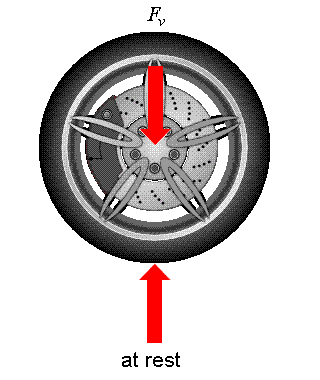Forces involved
In addition of the inertia force (ma) and the tire friction force (Ff = μFv), two other forces must be considered for evaluating longitudinal acceleration: the rolling resistance and the aerodynamic drag.
Rolling resistance

The rolling resistance (Fr = frFv) is a force that acts in a way similar to the friction force. The only difference is that the rolling resistance direction depends on the rolling direction of the tire and the friction force direction depends on the torque application. So sometimes the rolling resistance acts against the friction force (acceleration) and sometimes it works with the friction force (braking).
Since the rolling resistance and the friction force are always in the same plane, you could say that the result is a tire with «net» friction coefficient (= μ ± fr) that is greater or smaller depending if the vehicle is accelerating or braking.
The rolling resistance is very small and can be omitted in most cases. The net effect is usually a variation of 1-2% of the original tire friction coefficient. It is more important in off-road situations where that variation can go up to 30% (tire on sand for example).
Aerodynamic forces
Drag
The drag force (FD = 0.5ρCDAv2) is acting at height hD above the ground. Although unrelated, we can assume that the drag force height is equal to the center of gravity height (h). This will simplify the mathematical equations.
Lift
A lift force (FL = 0.5ρCLAv2) is generally produced by a typical vehicle. It is relatively small though, so it can be ignored in most cases. However, with race cars, not only do we try to avoid lift but we actually create «negative» lift, or downforce, with the help of inverted wings or ground effects.
This force will be distributed between the front and rear axle according to the vehicle design. Since it is the reaction forces at each axle that are important, we will divide the total lift force into two: the front lift force (FLf = 0.5ρCLfAv2) and the rear lift force (FLr = 0.5ρCLrAv2), such that FL = FLf + FLr (or CL = CLf + CLr).
